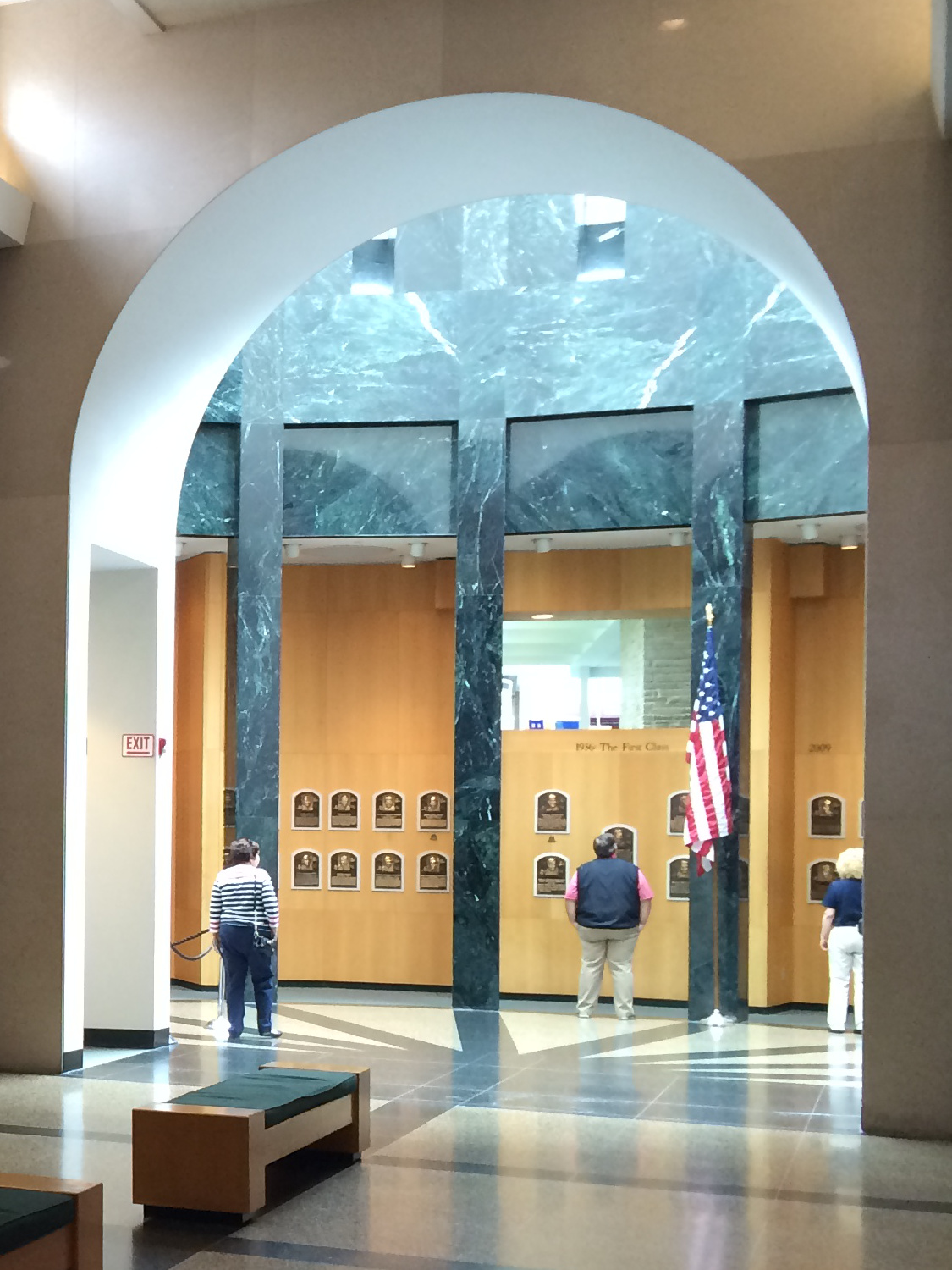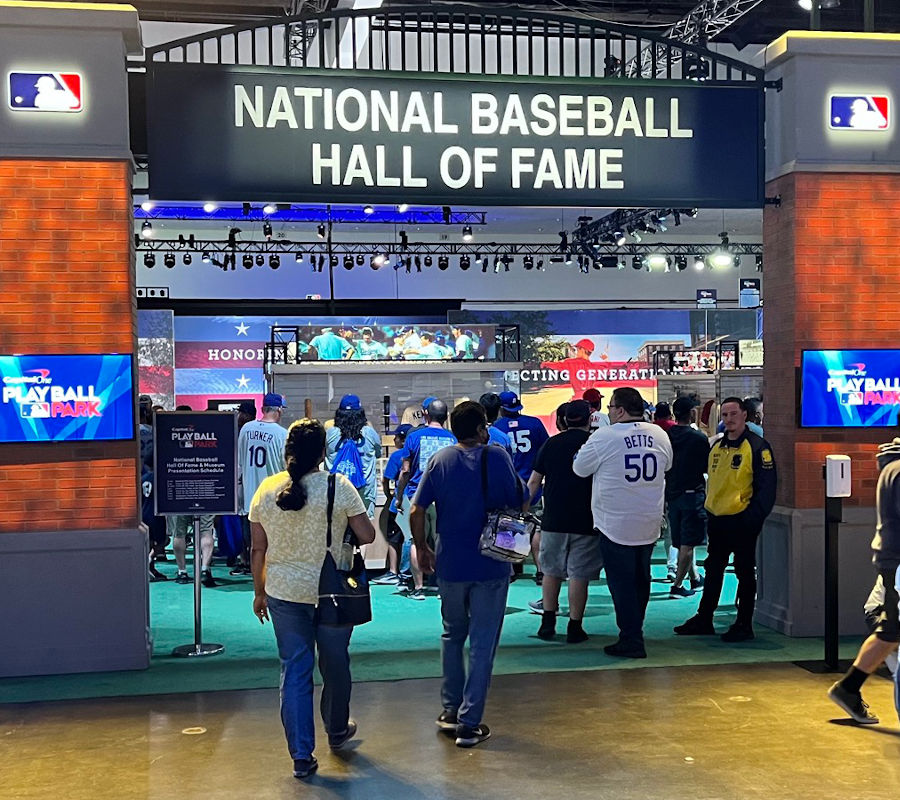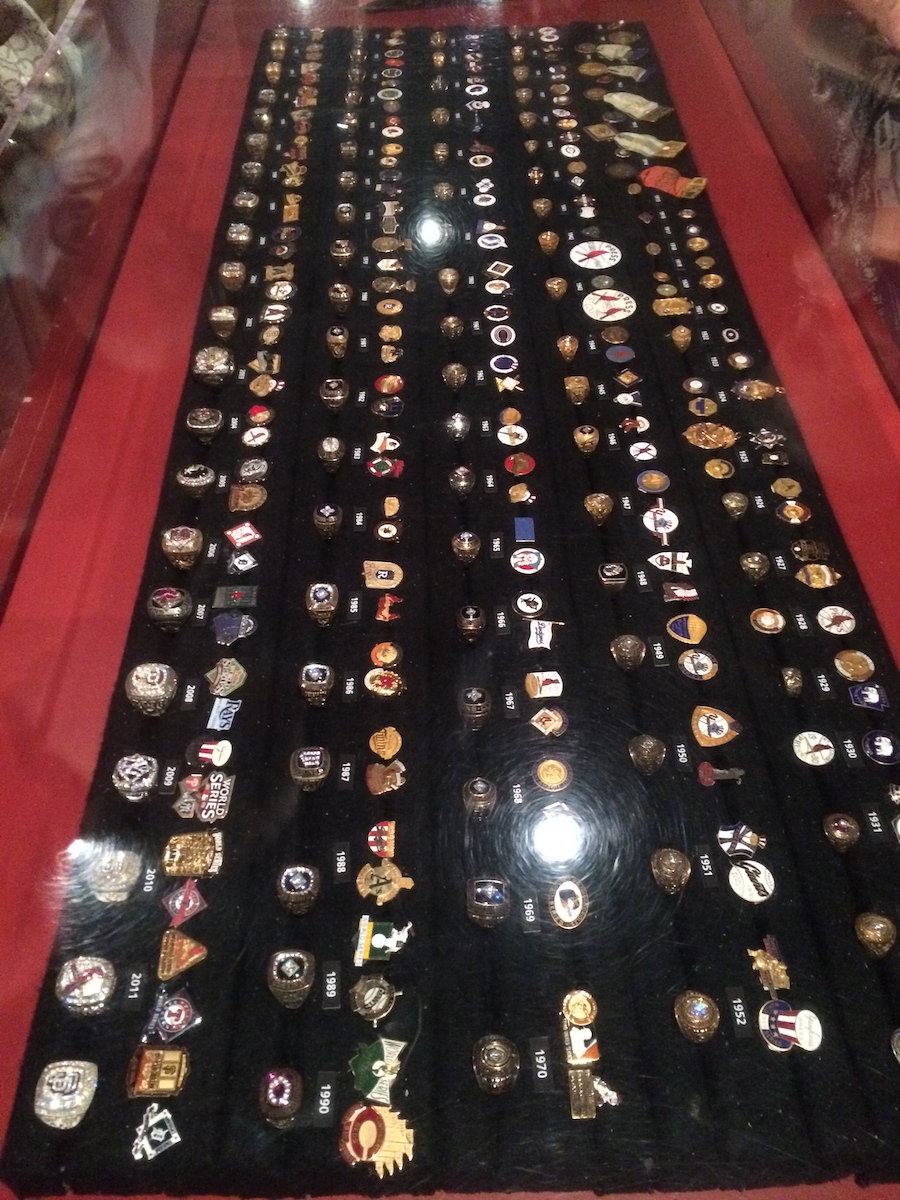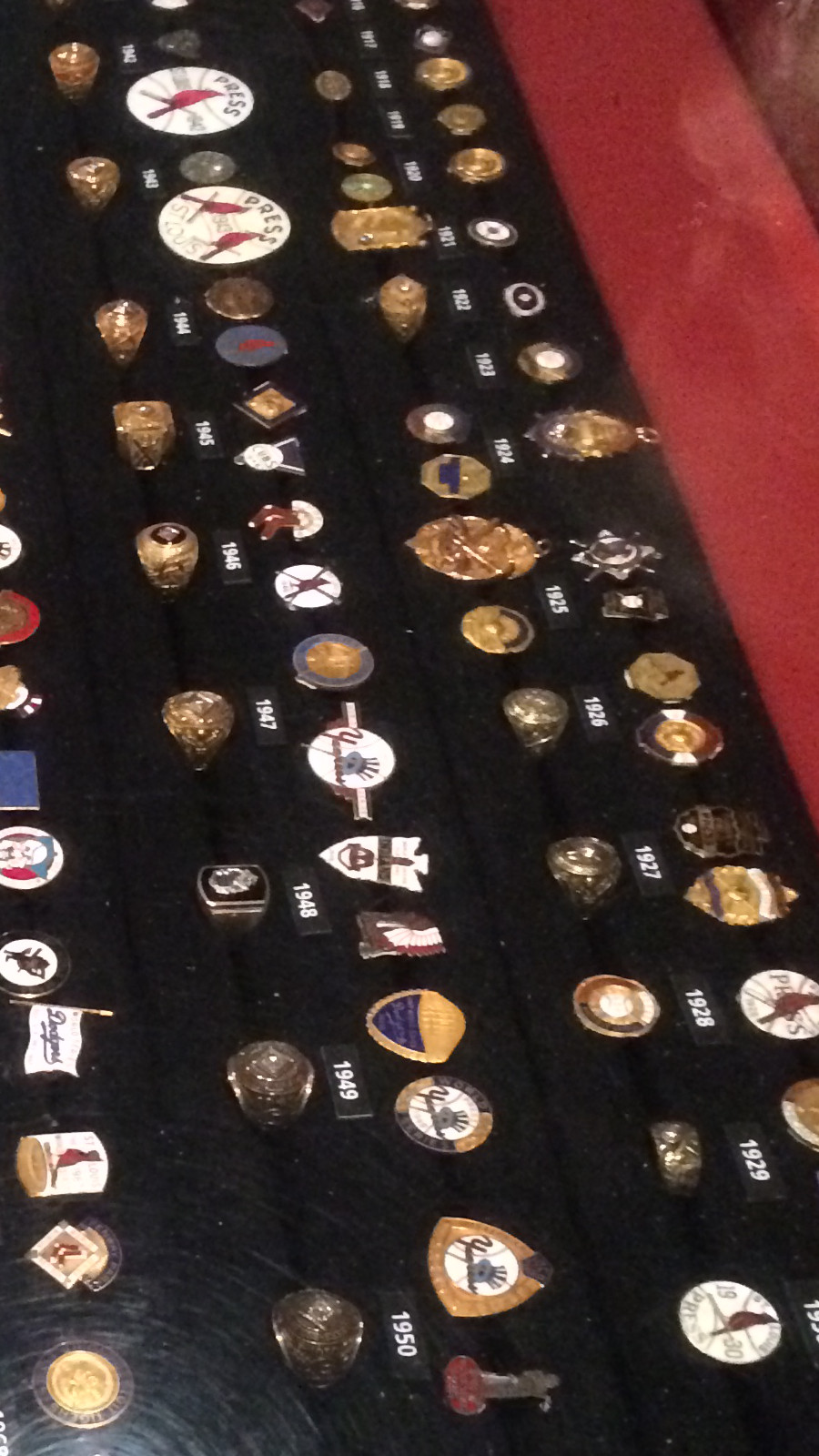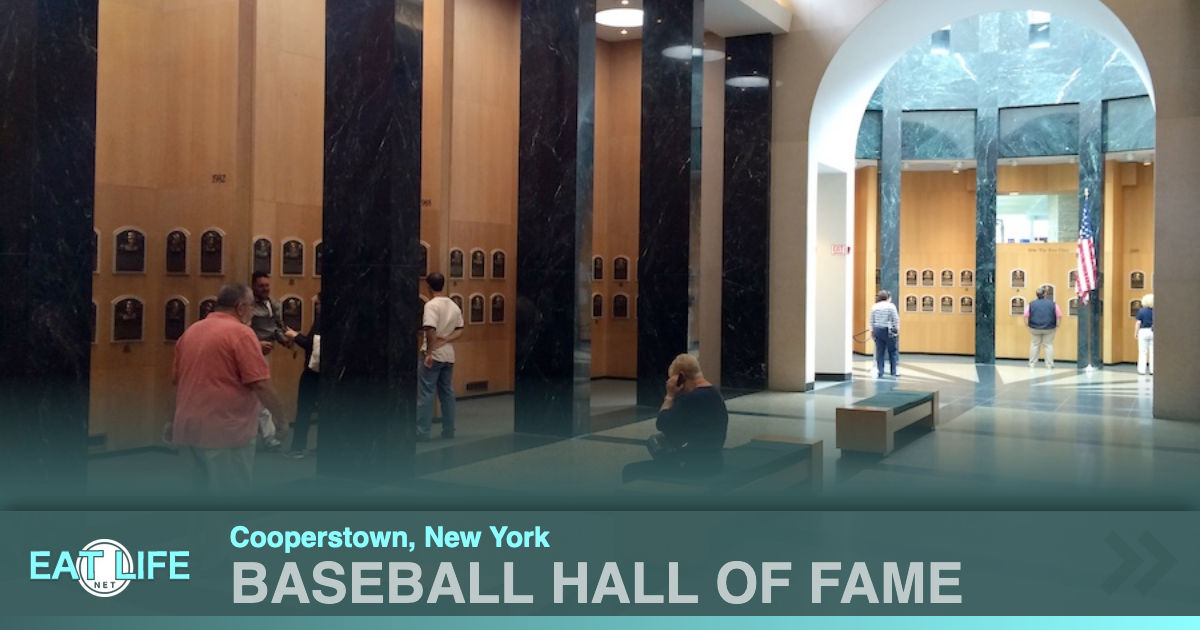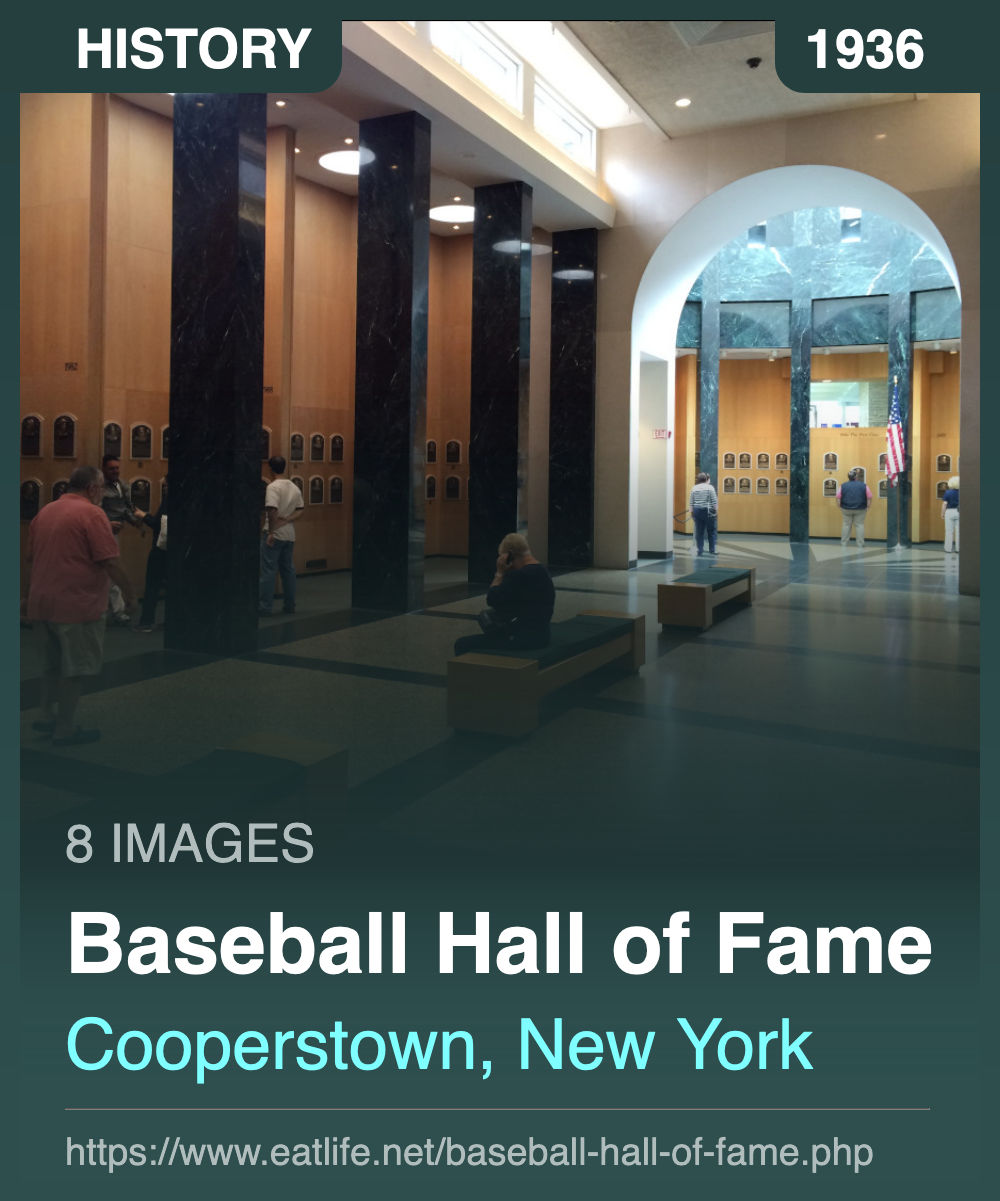Cooperstown
has become a synonym for "baseball". Nestled between the Adirondacks and the Catskills in Central New York, The National Baseball Hall of Fame and Museum honors those elected and immortalizes them with bronze plaques. Since the first election in 1936, the question of who should be included in the Hall has been the source of great delight and debate. One thing is clear, election to the Hall of Fame is the highest mark of achievement in the game.
Doubleday Myth:
By the last half of the 19th Century, baseball had become the National Pastime. The United States was a little more than 100 years old, and baseball had evolved with the country. But there was no definitive answer as to the birth of the game. Enter the Spalding Commission, a board created by sporting goods magnate and former player A.G. Spalding to establish the genesis of baseball. And after a few years of searching, they found their answer:Abner Graves, a mining engineer, proclaimed that Abner Doubleday - a decorated Union Army officer who fired the first shot in defense of Fort Sumter at the start of the Civil War and later served at the Battle of Gettysburg - invented baseball in 1839 in Cooperstown. That was good enough for the Spalding Commission, which came to its conclusion in 1907. In the years since, The Doubleday Myth has been refuted. Doubleday himself was at West Point in 1839. Yet The Myth has become strong enough that the facts alone do not deter the spirit of Cooperstown.
In 1936 the inaugural Hall of Fame class of Ty Cobb, Walter Johnson, Christy Mathewson, Babe Ruth and Honus Wagner was elected.
Three years later, the Hall of Fame building officially opened in Cooperstown as all of baseball paused to honor what was called "Baseball's Centennial" and as the first four Hall of Fame classes were inducted. To mark the occasion, Time Magazine wrote: "The world will little note nor long remember what (Doubleday) did at Gettysburg, but it can never forget what he did at Cooperstown."
The National Baseball Hall of Fame and Museum, surely the most well-known sports shrine in the world, continues to thrive in the town where baseball's pulse beats the strongest.
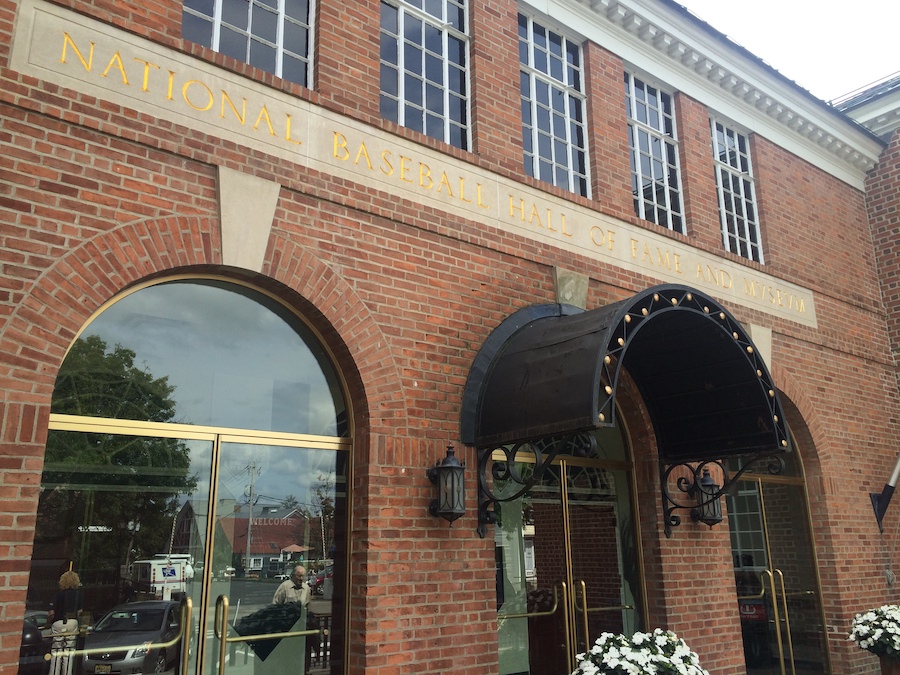

Babe Wielded this 36-inch, 40-ounce bat when he played with the Red Sox in 1919
The Hall's motto is: Preserving History, Honoring Excellence, Connecting GenerationsNational Baseball Hall of Fame and Museum:
- It serves as the central point of the history of baseball in the United States
- It displays baseball-related artifacts and exhibits, honoring those who have excelled in playing, managing, and serving the sport
- The Hall of Fame was established in 1939 by Stephen Carlton Clark, an heir to the Singer Sewing Machine fortune.
Clark sought to bring tourists to a city hurt by the Great Depression, which reduced the local tourist trade, and Prohibition, which devastated the local hops industry. Clark constructed the Hall of Fame's building, and it was dedicated on June 12, 1939. (His granddaughter, Jane Forbes Clark, is the current chairman of the board of directors.)
- The erroneous claim that Civil War hero Abner Doubleday invented baseball in Cooperstown was instrumental in the early marketing of the Hall.
- An expanded library and research facility opened in 1994.
- The Hall and Museum completed a series of renovations in spring 2005.
- Approximately 260,000 visitors enter the museum each year, and the running total has surpassed 17 million. Visitors see only a fraction of its 40,000 artifacts, 3 million library items (such as newspaper clippings and photos) and 140,000 baseball cards.
Among baseball fans, "Hall of Fame" means not only the museum and facility in Cooperstown, New York, but the pantheon of players, managers, umpires, executives, and pioneers who have been inducted into the HallAs of January 2021, 333 people had been elected to the Hall of Fame:
- 234 former Major League Baseball players
- 35 Negro league baseball players and executives
- 23 managers
- 10 umpires
- 36 pioneers, executives, and organizers
114 members of the Hall of Fame have been inducted posthumously, including four who died after their selection was announced. Of the 35 Negro league members, 29 were inducted posthumously, including all 24 selected since the 1990s. The Hall of Fame includes one female member.
Selection process:
Players are currently inducted into the Hall of Fame through election by either:
- The Baseball Writers Association of America
- The Veterans Committee - which now consists of four subcommittees, each of which considers and votes for candidates from a separate era of baseball
Five years after retirement, any player with 10 years of major league experience who passes a screening committee is eligible to be elected by BBWAA members. Under special circumstances, certain players may be deemed eligible for induction even though they have not met all requirements
From a final ballot typically including 25–40 candidates, each writer may vote for up to 10 players; until the late 1950s, voters were advised to cast votes for the maximum 10 candidates. Any player named on 75% or more of all ballots cast is elected.If a player fails to be elected by the BBWAA within 10 years of his retirement from active play, he may be selected by the Veterans Committee.
https://en.wikipedia.org/wiki/National_Baseball_Hall_of_Fame_and_Museum
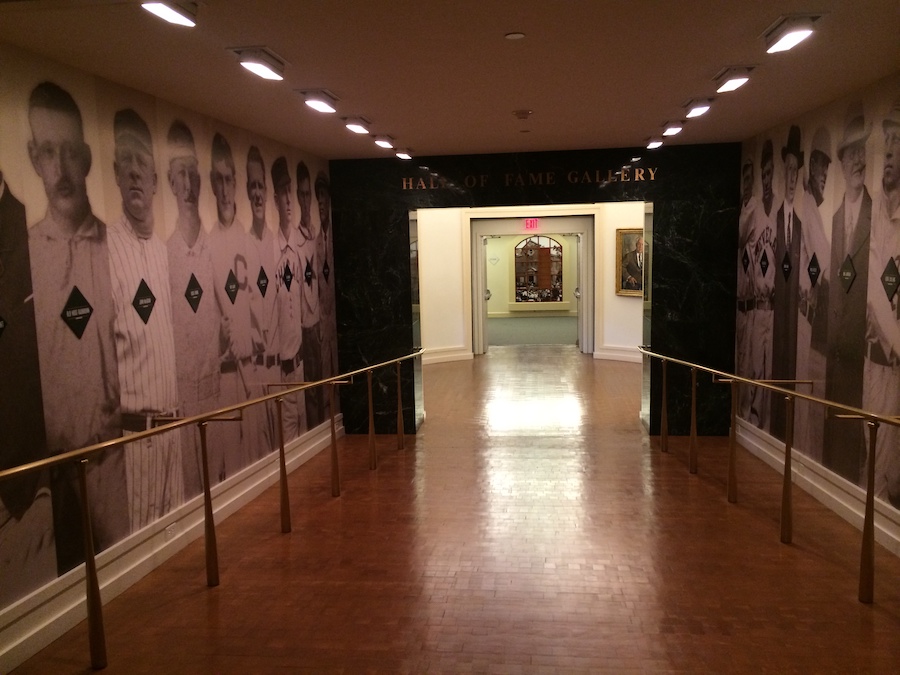
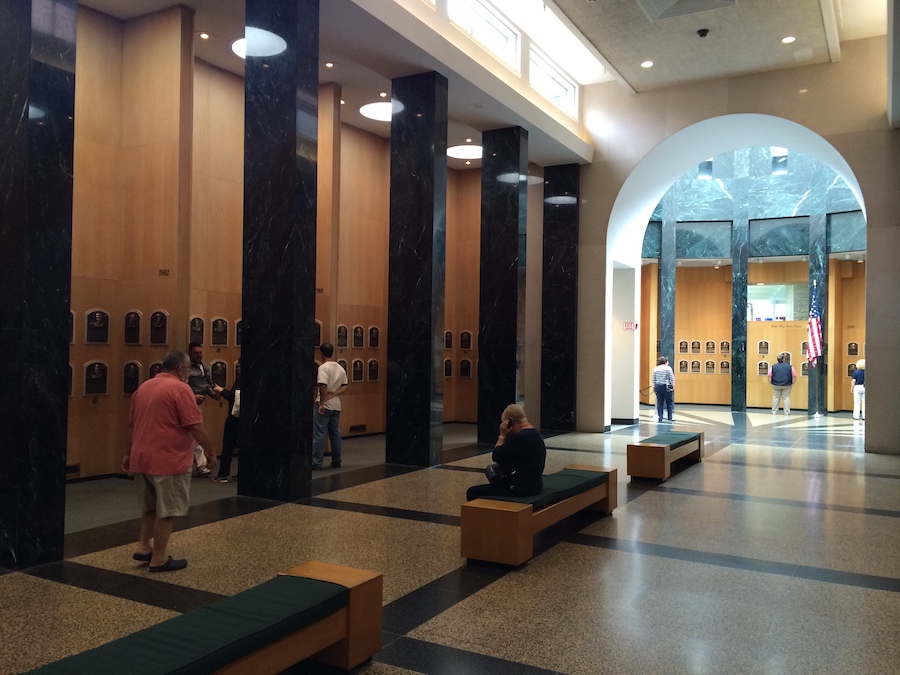

- Bat used by Hank Aaron to hit his 714th career home run, tying Babe Ruth for the all-time mark, April 4, 1974
- Bat wielded bly Hank Aaron to hit his 716th and 717th career home run, April 11 and April 21, 1974
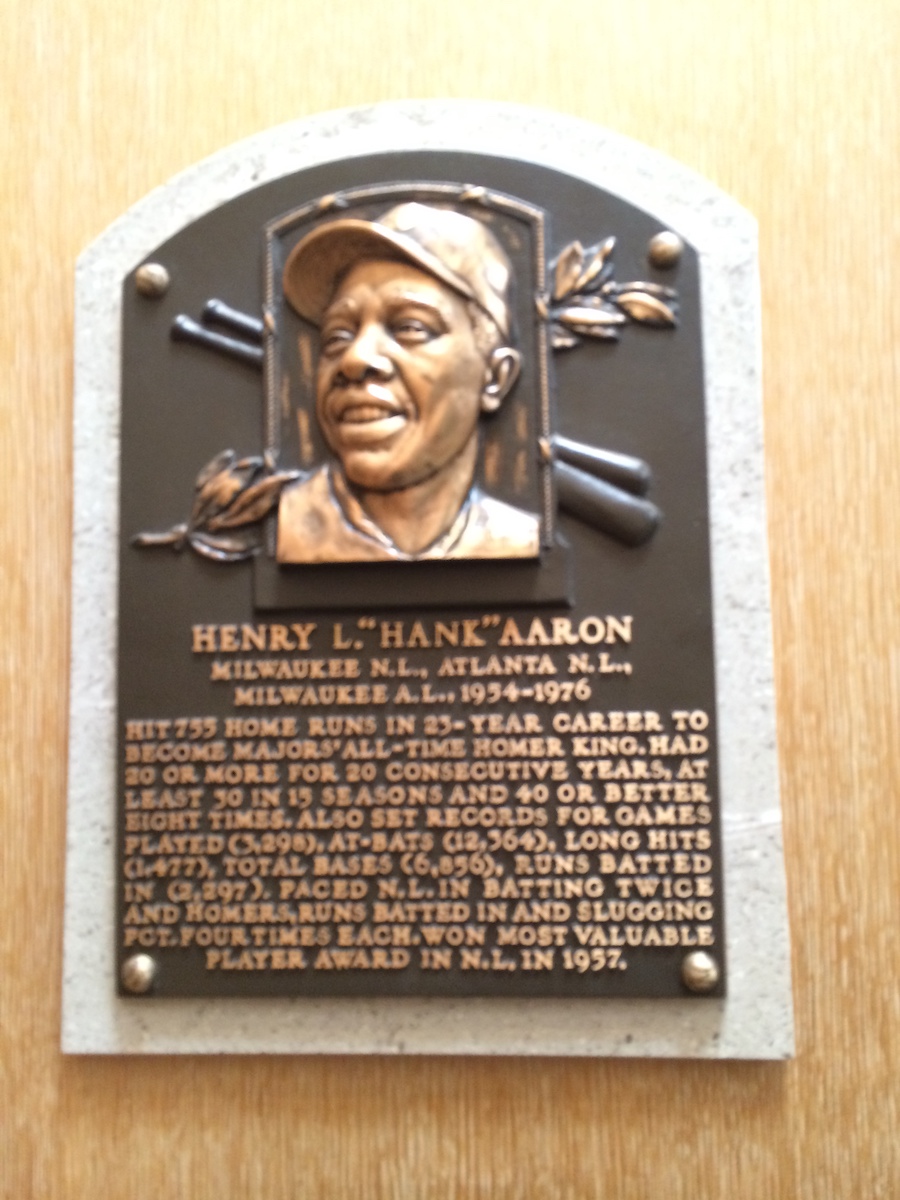
Milwaukee N.L., Atlanta N.L.,
Milwaukee A.L., 1954-1976
Hit 755 home runs in a 23-year career to become majors' all-time homer king. Had 20 or more for 20 consecutive years, at leasts 30 in 15 seasons and 40 or better eight times. Also set records for games played (3,298), at-bats (12,564), long hits (1,477), total bases (6,856), runs batted in (2,297), paced N.L. in batting twice and homers, runs batted in and slugging pct. four times each. Won most valuable player award in N.L. in 1957.
| Hall of Fame Inductions by Year: | |
|---|---|
| mlb.com/news/hall-of-fame-inductions-by-year | |
2022:
| |
2021:
| |
2020:
| |
2019:
| |
2018:
| |
2017:
| |
2016:
| |
2015:
| |
2014:
| |
2013:
| |
2012:
| |
2011:
| |
2010:
| |
2009:
| |
2008:
| |
2007:
| |
2006:
| |
2005:
| |
2004:
| |
2003:
| |
2002:
| |
2001:
| |
2000:
| |
1999:
| |
1998:
| |
1997:
| |
1996:
| |
1995:
| |
1994:
| |
1993:
| |
1992:
| |
1991:
| |
1990:
| |
1989:
| |
1988:
| |
1987:
| |
1986:
| |
1985:
| |
1984:
| |
1983:
| |
1982:
| |
1981:
| |
1980:
| |
1979:
| |
1978:
| |
1977:
| |
1976:
| |
1975:
| |
1974:
| |
1973:
| |
1972:
| |
1971:
| |
1970:
| |
1969:
| |
1968:
| |
1967:
| |
1966:
| |
1965:
| |
1964:
| |
1963:
| |
1962:
| |
1961:
| |
1960:
| |
1959:
| |
1958:
| |
1957:
| |
1956:
| |
1955:
| |
1954:
| |
1953:
| |
1952:
| |
1951:
| |
1950:
| |
1949:
| |
1948:
| |
1947:
| |
1946:
| |
1945:
| |
1944:
| |
1943:
| |
1942:
| |
1941:
| |
1940:
| |
1939:
| |
1938:
| |
1937:
| |
1936:
| |

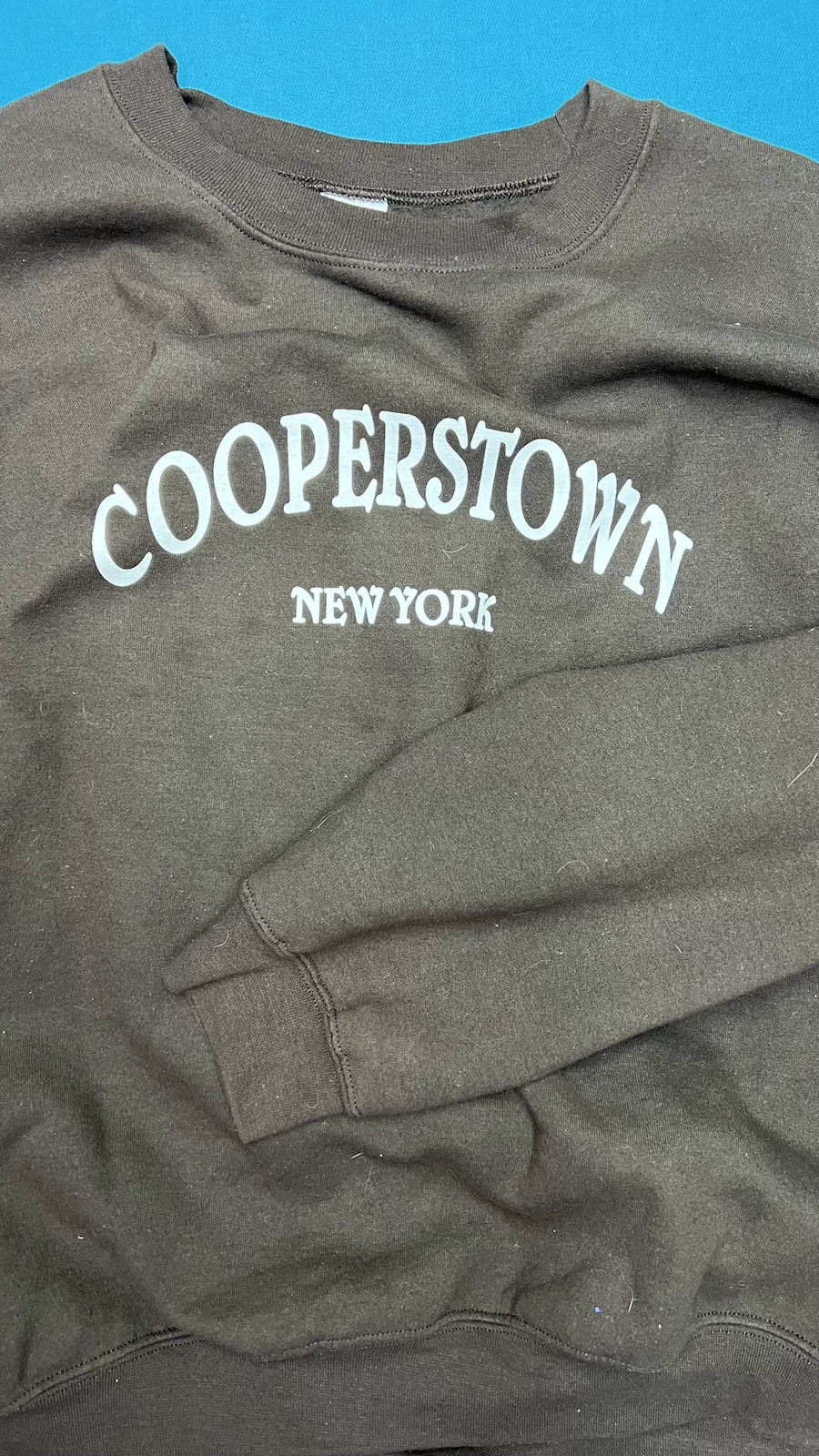
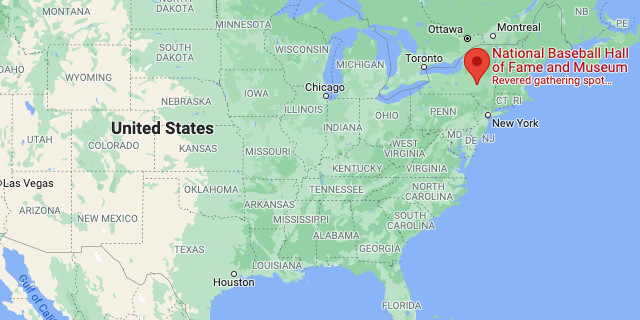
https://www.google.com/maps/place/National+Baseball+Hall+of+Fame+and+Museum
